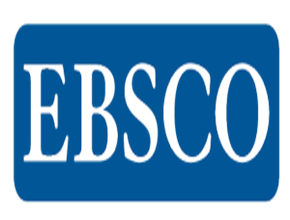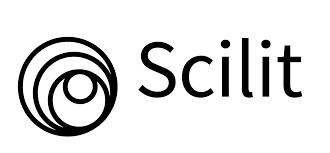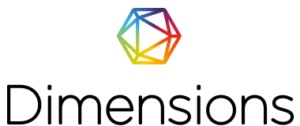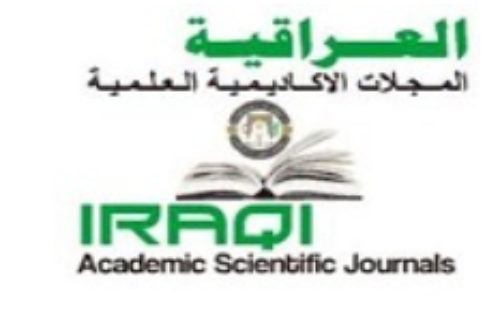Hormonal Imbalance of Estrogen and Progesterone, Its Association with PCOS, and Its Impact on Pregnancy Rates in Women from Thi-Qar Governorate
DOI:
https://doi.org/10.32792/utq/utjsci/v12i1.1358Keywords:
Estradiol-E2, Progesterone, PCOS, HOMA-IR, Pregnancy Rates.Abstract
Polycystic Ovary Syndrome (PCOS) is a common endocrine disorder-affecting women of reproductive age, characterized by hormonal imbalances, irregular ovulation, and metabolic disturbances. The variability in estrogen and progesterone levels plays a crucial role in reproductive health. The aim of this study is to evaluate the levels of Estradiol-E2, progesterone (P4), and their effect on pregnancy rates in women with PCOS. It also covers the effect of follicle-stimulating hormone (FSH), luteinizing hormone (LH), testosterone, thyroid-stimulating hormone (TSH) and anti-Müllerian hormone (AMH). Additionally, metabolic markers such as fasting glucose, fasting insulin, body mass index (BMI), and insulin resistance (HOMA-IR). This study was conducted on 120 women aged 18-45 years, categorized into two age groups (18-30 and 31-45 years) to ensure balanced representation (60 with PCOS and 60 healthy controls). Serum hormone levels were measured using ELFA techniques, and metabolic parameters were evaluated using standard biochemical assays. PCOS patients exhibited significantly higher levels of (E2), LH, AMH, and testosterone, while progesterone and FSH were significantly lower compared to the control group (P < 0.05). HOMA-IR levels were significantly higher in PCOS patients, indicating an increased prevalence of insulin resistance. Pearson correlation analysis revealed a strong positive correlation between HOMA-IR and Estradiol-E2 (r = 0.558, ** P < 0.05) and a strong negative correlation with progesterone (r = -0.654, ** P < 0.05). The hormonal and metabolic dysregulations in PCOS negatively affect pregnancy rates, with Estradiol-E2, progesterone, and insulin resistance playing key roles.
Received: 2025-03-07
Revised: 2025-04-01
Accepted: 2025-04-15
References
M. Asunción, R. M. Calvo, J. L. San Millán, J. Sancho, S. Avila, and H. F. Escobar-Morreale, “A prospective study of the prevalence of the polycystic ovary syndrome in unselected Caucasian women from Spain,” J. Clin. Endocrinol. Metab. vol. 85, pp. 2434–2438, 2000.
E. Diamanti-Kandarakis, C. R. Kouli, A. T. Bergiele, et al., “A survey of the polycystic ovary syndrome in the Greek island of Lesbos: hormonal and metabolic profile,” J. Clin. Endocrinol. Metab. vol. 84, pp. 4006–4011, 1999.
W. A. March, V. M. Moore, K. J. Willson, D. I. W. Phillips, R. J. Norman, and M. J. Davies, “The prevalence of polycystic ovary syndrome in a community sample assessed under contrasting diagnostic criteria,” Hum. Reprod. vol. 25, pp. 544–551, 2010.
B. C. J. M. Fauser, B. C. Tarlatzis, R. W. Rebar, R. S. Legro, A. H. Balen et al., "Consensus on women’s health aspects of polycystic ovary syndrome (PCOS): the Amsterdam ESHRE/ASRM-Sponsored 3rd PCOS Consensus Workshop Group," Hum. Reprod, vol. 27, pp. 14–24, 2012.
H. J. Teede, C. T. Tay, J. Laven, A. Dokras, L. J. Moran, T. T. Piltonen, M. F. Costello, J. Boivin, L. M. Redman, J. A. Boyle, R. J. Norman, A. Mousa, and A. E. Joham, "Recommendations from the International Evidence-based Guideline for the assessment and management of polycystic ovary syndrome," Human Reproduction, vol. 2023, pp. 1655–1679, 2023.
S. Palomba, T. T. Piltonen, and L. C. Giudice, "Endometrial function in women with polycystic ovary syndrome: A comprehensive review," Human Reproduction Update, vol. 27, pp. 584–618, 2021.
P. F. Svendsen, S. Madsbad, and L. Nilas, “The insulin-resistant phenotype of polycystic ovary syndrome,” Fertil. Steril. vol. 94, pp. 1052–1058, 2010.
I. Wallace, M. McKinley, P. Bell, and S. Hunter, “Sex hormone binding globulin and insulin resistance,” Clin. Endocrinol. vol. 78, pp. 321–329, 2013.
J. R. Wood, D. A. Dumesic, D. H. Abbott, and J. F. Strauss, “Molecular abnormalities in oocytes from women with polycystic ovary syndrome revealed by microarray analysis,” J. Clin. Endocrinol. Metab. vol. 92, pp. 705–713, 2007.
G. V. Callard, A. M. Tarrant, A. Novillo, et al. “Evolutionary origins of the estrogen signaling system: Insights from amphioxus,” J. Steroid Biochem. Mol. Biol., vol. 127, pp. 176–188, 2011.
I. T. Cameron, G. Irvine, and J. E. Norman, Menstruation. In Scientific Essentials of Reproductive Medicine, London, UK: W.B. Saunders, 1996.
J. D. Graham and C. L. Clarke, “Physiological action of progesterone in target tissues,” Endocrine Rev., vol. 18, pp. 502-519, 1997.
A. H. Roe and A. Dokras, “The diagnosis of polycystic ovary syndrome in adolescents,” Rev. Obstet. Gynecol., vol. 4, no. 2, pp. 45–51, Summer 2011.
D. Lizneva, L. Suturina, W. Walker, S. Brakta, et al. “Criteria, prevalence, and phenotypes of polycystic ovary syndrome,” Fertil. Steril. vol. 106, no. 1, pp. 6–15, Jul. 2016.
A. Garmendia Madariaga, S. Santos Palacios, F. Guillén-Grima, and J. C. Galofré, "The incidence and prevalence of thyroid dysfunction in Europe: a meta-analysis," J. Clin. Endocrinol. Metab. vol. 99, pp. 923–931, 2014.
C. Mu, X. Ming, Y. Tian, Y. Liu, M. Yao, Y. Ni, et al."Mapping global epidemiology of thyroid nodules among general population: a systematic review and meta-analysis," Front. Oncol, vol. 12, p. 1029926, 2022.
X. Hu, Y. Chen, Y. Shen, R. Tian, Y. Sheng, and H. Que, "Global prevalence and epidemiological trends of Hashimoto's thyroiditis in adults: a systematic review and meta-analysis," Front. Public Health, vol. 10, p. 1020709, 2022.
J. E. Lee, S. H. Yoon, H. O. Kim, and E. G. Min, “Correlation between the serum luteinizing hormone to follicle-stimulating hormone ratio and the anti-Müllerian hormone levels in normo-ovulatory women,” J. Korean Med. Sci., vol. 30, no. 3, pp. 296–300, 2015.
S. M. Sirmans and K. A. Pate, “Epidemiology, diagnosis and management of polycystic ovary syndrome,” Clin. Epidemiol. vol. 6, pp. 1–13, 2013.
X. Bai, L. Zheng, D. Li, et al. "Research progress of endometrial receptivity in patients with polycystic ovary syndrome: a systematic review," Reproductive Biology and Endocrinology, vol. 19, no. 1, p. 122, 2021.
Balen, A. H., Laven, J. S. E., Tan, S.-L., and Dewailly, D., "Ultrasound assessment of the polycystic ovary: international consensus definitions," Hum. Reprod. Update, vol. 9, no. 6, pp. 505–514, Nov. 2003.
Z. Tang, X. Xu, S. Deng, Z. Lian, and K. Yu, "Oestrogenic endocrine disruptors in the placenta and the fetus," Int. J. Mol. Sci., vol. 21, no. 5, p. 1519, 2020.
P. Pigny, E. Merlen, Y. Robert, C. Cortet-Rudelli, C. Decanter, S. Jonard, and D. Dewailly, "Elevated serum level of anti-Müllerian hormone in patients with polycystic ovary syndrome: Relationship to the ovarian follicle excess and to the follicular arrest," J. Clin. Endocrinol. Metab. vol. 88, pp. 5957–5962, 2003.
J. S. E. Laven, A. G. M. G. J. Mulders, J. A. Visser, A. P. Themmen, F. H. De Jong, and B. C. J. M. Fauser, "Anti-Müllerian hormone serum concentrations in normoovulatory and anovulatory women of reproductive age," J. Clin. Endocrinol. Metab. vol. 89, pp. 318–323, 2004.
C. A. Amisi, "Markers of insulin resistance in Polycystic ovary syndrome women: An update," World J. Diabetes, vol. 13, no. 3, pp. 129–149, 2022.
J. J. Kim, K. R. Hwang, S. H. Oh, S. J. Chae, S. H. Yoon, and Y. M. Choi, "Prevalence of insulin resistance in Korean women with polycystic ovary syndrome according to various homeostasis model assessment for insulin resistance cutoff values," Fertil. Steril. vol. 112, no. 5 pp.959–966, 2019.
S. H. Hong, Y. A. Sung, Y. S. Hong, K. Jeong, H. Chung, and H. Lee, "Polycystic ovary morphology is associated with insulin resistance in women with polycystic ovary syndrome," Clin. Endocrinol. vol. 87, no. 4, pp. 375–380, 2017, doi: 10.1111/cen.13380.
T. M. Barber and S. Franks, "Obesity and polycystic ovary syndrome," Clin. Endocrinol. vol. 95, pp. 531–541, 2021.
S. T. Yang, C. H. Liu, and S. H. Ma, "Association between pre-pregnancy overweightness/obesity and pregnancy outcomes in women with polycystic ovary syndrome: A systematic review and meta-analysis," Int. J. Environ. Res. Public Health, vol. 19, p. 9094, 2022.
Downloads
Published
License
Copyright (c) 2025 University of Thi-Qar Journal of Science

This work is licensed under a Creative Commons Attribution 4.0 International License.












